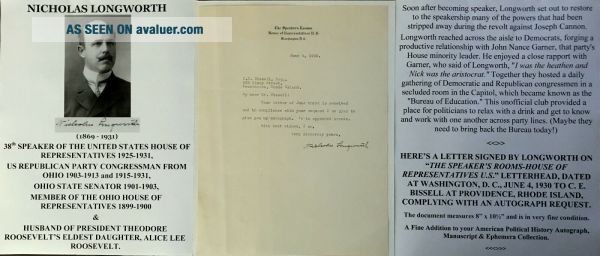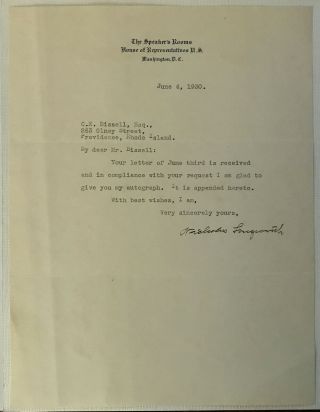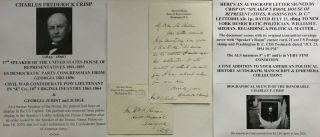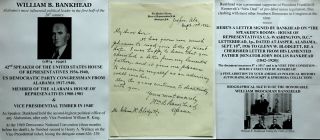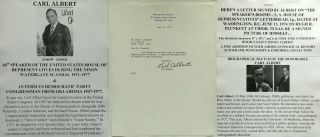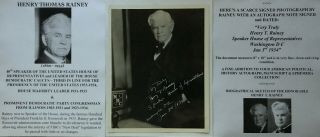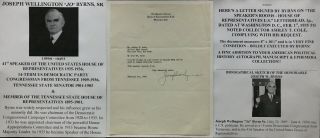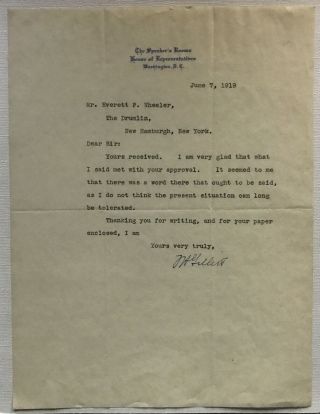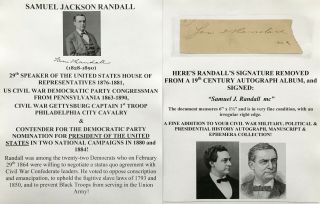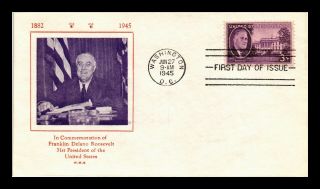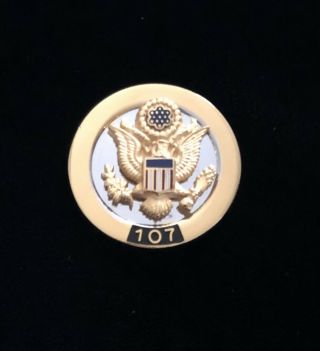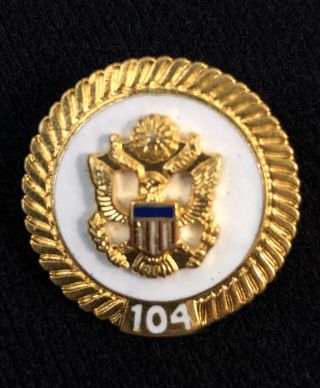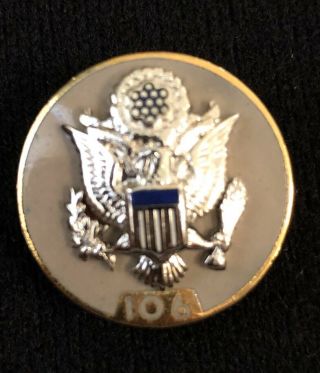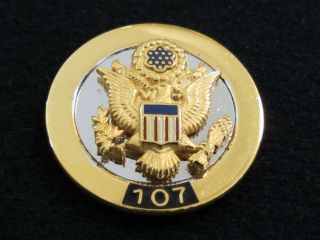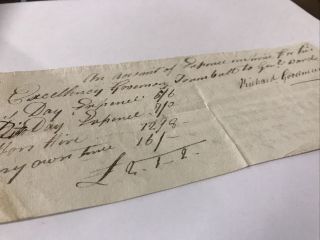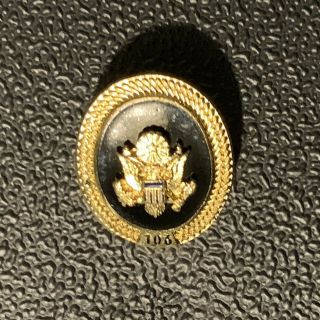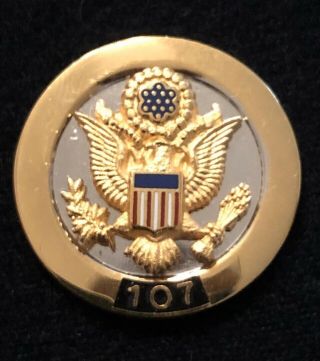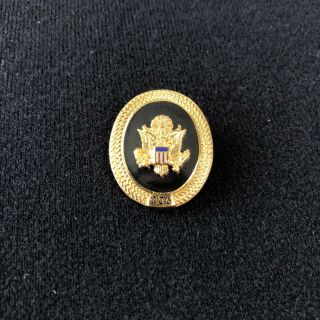US SPEAKER HOUSE CONGRESSMAN OHIO ROOSEVELT GIRL HUSBAND LONGWORTH LETTER SIGNED
Item History & Price
NicholasLongworth (05 November 1869–09 April 1931), Speaker of the House ofRepresentatives, was born in Cincinnati, Ohio, the son of Nicholas Longworth, alawyer, and Susan Walker. He was a fourth-generation member of one ofCincinnati’s oldest and wealthiest families. His great grandfather, the first Nicholas Longworth, settled in Cincinnatiin 1804 and established the family fortune by speculating in land. His grandfatherand his father, the latter a judge of the Ohio Supreme Court for one year, wereprominent in local civic and cultural affairs. After receiving his B.A. fromHarvard University in 1891 and attending Harvard Law School for a year, heenrolled in Cincinnati Law School, earning his LL.B. in 1894. Supported bylocal Republican boss George B. Cox, he was elected to theCincinnati Board of Education in 1898 and to the Ohio House of Representativesa year later. In 1901 he was elected to the Ohio Senate. The Longworth Act(1902), regulating the issuance of municipal bonds, was later acclaimed as oneof the most successful laws in Ohio’s history. In 1902 Cox offered Longworththe party’s nomination for the U.S. House of Representatives. Longworth waseasily elected, and he served in the House from 1903 to 1913 and from 1915until his death. He was among the many Republican incumbents defeated forreelection in 1912 as a result of a split between the party’s mainstreammembers and its progressive wing, which deserted President William Howard Taft to support Theodore Roosevelt.Initially assigned to the Committee on Foreign Affairs, Longworth became an advocate for better housing for U.S. ambassadors abroad.His bill to authorize the purchase of overseas residences for U.S. diplomatseventually became law. In 1907 he joined the Committee on Ways and Means, whichprovided him a platform for his views favoring limited government, moderatelyhigh import tariffs, and low domestic taxes. His work on the Payne-AldrichTariff Act of 1909 revealed an affinity for the political horse-trading thatsuch legislation requires. Thereafter, he specialized in tariff law and wasregarded by many as an expert in that area. A proponent of party government, heinitially was a loyal follower of Speaker Joseph G. Cannon, whose autocratic styleand vindictiveness rankled many Republicans as well as Democrats. However, in1910, with Cannon’s unpopularity threatening his party’s prospects at the polls, Longworth broke ranks and became the first mainstream Republican to call forthe election of a new Speaker. His action prompted some seventy Republicans tojoin him, ensuring that Cannon would not return as Speaker in the nextCongress, but it failed to save the party from losing its House majority in theNovember elections.Although usually labeled a conservative, Longworth oftensided with his party’s moderates on key issues, such as tariff policy. He had astreak of independence, which led him occasionally to take positions not sharedby most of his House colleagues, such as when he denounced the seniority systemfor choosing committee chairmen. When the House Republicans returned to powerin 1919, he emerged as one of his party’s key leaders. In 1923 his fellow partymembers chose him to succeed Frank Mondell as the majority floorleader. His talent as a conciliator soon became evident in his negotiation of adelicate truce that kept disgruntled progressives from bolting the HouseRepublican party and thereby reducing it to minority status. As majorityleader, he worked harmoniously with the Calvin Coolidge administration to enact atax reduction, a veterans’ bonus, and an agreement to settle the European wardebt. Under his leadership, the House in 1923–1925 passed 594 bills, double thenumber of the preceding two years. In April 1926 Trend magazine, praisingthe majority leader for a successful first term, said he had transformed adisorganized House into “one of the most efficient legislative machines incontemporary American history.”After serving for two years as majority leader, Longworthreplaced Frederick Gillett as Speaker of the Housewhen Gillett moved to the Senate on 7 December 1925. Longworth assumed anoffice that had been stripped of much of its defined authority. Under rulesadopted following the House’s 1910–1911 revolt against Speaker Cannon, theSpeaker’s role was reduced to that of a ceremonial officer, while the majorityleader dominated the key party committees that set policy and managed thelegislative agenda. Unwilling to give up his power as majority leader for theSpeakership’s prestige, Longworth maneuvered with his followers to accept thenew office on his own terms, which included retaining his control over theparty’s governing committees. He thus managed, as he later explained, “to takethe majority leadership from the floor to the chair, which most Speakers inrecent years, except for Reed [Thomas B. Reed] and Cannon, were not ableto do.” His achievement was extraordinary. Without changing the House rules, hetook a weak and ineffectual office and overnight, by the force of his characterand personality, restored it to dominance in the House. In demanding punishmentfor thirteen progressives who had refused to support the 1924 Republicancandidate for president, he established his intent to command with a firm hand.Throughout his three terms as Speaker (1925–1931), Longworth ruled as a benevolent czar. His influence over House affairs rivaledCannon’s at his peak. Unlike Cannon, however, he practiced the art ofconciliation and accommodation so astutely that he got his way withoutsacrificing his popularity or his reputation for fairness. He gave much attentionto the internal affairs of the House, introducing various reforms. He posted inadvance the coming week’s legislative calendar, information previously withheldfrom the minority; he made the Congressional Record more reliable bybarring members from self-serving editing of their transcribed debates; and heended House practices that discriminated against the women then beginning toenter Congress. Longworth was a top contender for the 1928 Republicanpresidential nomination until his anti-Prohibition record became an issue inthe campaign.Perpetually cheerful and outgoing, Longworth was anaccomplished musician and comic performer and a highly popular figure onCapitol Hill and in Washington society. His marriage in 1906 to Alice LeeRoosevelt (Alice Lee Roosevelt Longworth), daughterof then president Theodore Roosevelt, attracted worldwide attention and broughthim instant fame. The Longworths had one daughter. Although he was a seriousand talented lawmaker, Longworth’s marriage caused many to dismiss him as awealthy dilettante who owed his success more to a politically powerfulfather-in-law than to his own ability and hard work. Moreover, his joyousattitude toward life led some to doubt his seriousness as a leader. One of hisHouse colleagues noted after Longworth’s death, “His reputation as a goodfellow and a charming companion rather obscured his real ability, which wasvery great.” Consequently, he has never gained the recognition due him as oneof the outstanding Speakers of the House. He died while visiting friends inAiken, South Carolina.BibliographyThe bulk of Longworth’s papers were lost or destroyedfollowing his death. Most of his extant correspondence, speeches, articles, andscrapbooks are archived at the Cincinnati [Ohio] Historical Society. Additionalpapers are in the Nicholas Longworth and Alice Longworth collections of theManuscript Division, Library of Congress, Washington, D.C. Clara Longworth DeChambrun, The Making of Nicholas Longworth: Annals of an American Family(1933), is a full-length biography of him, affectionately written by hissister, and is primarily an account of his early years in Cincinnati. Articlesand other biographical sources are listed in Donald R. Kennon, ed., TheSpeakers of the U.S. House of Representatives: A Bibliography, 1789–1984(1986). Obituaries are in the New York Times, New York Herald Tribune, and Washington Post, all 10 Apr. 1931.I am a proud member of the Universal Autograph Collectors Club(UACC), The Ephemera Society of America, the Manuscript Society and theAmerican Political Items Collectors (APIC) (member name: John Lissandrello). Isubscribe to each organizations' code of ethics and authenticity is guaranteed.~Providing quality service and historical memorabilia online for over twentyyears.~
WE ONLY SELL GENUINE ITEMS, i.e., NO REPRODUCTIONS, FAKES OR COPIES!



